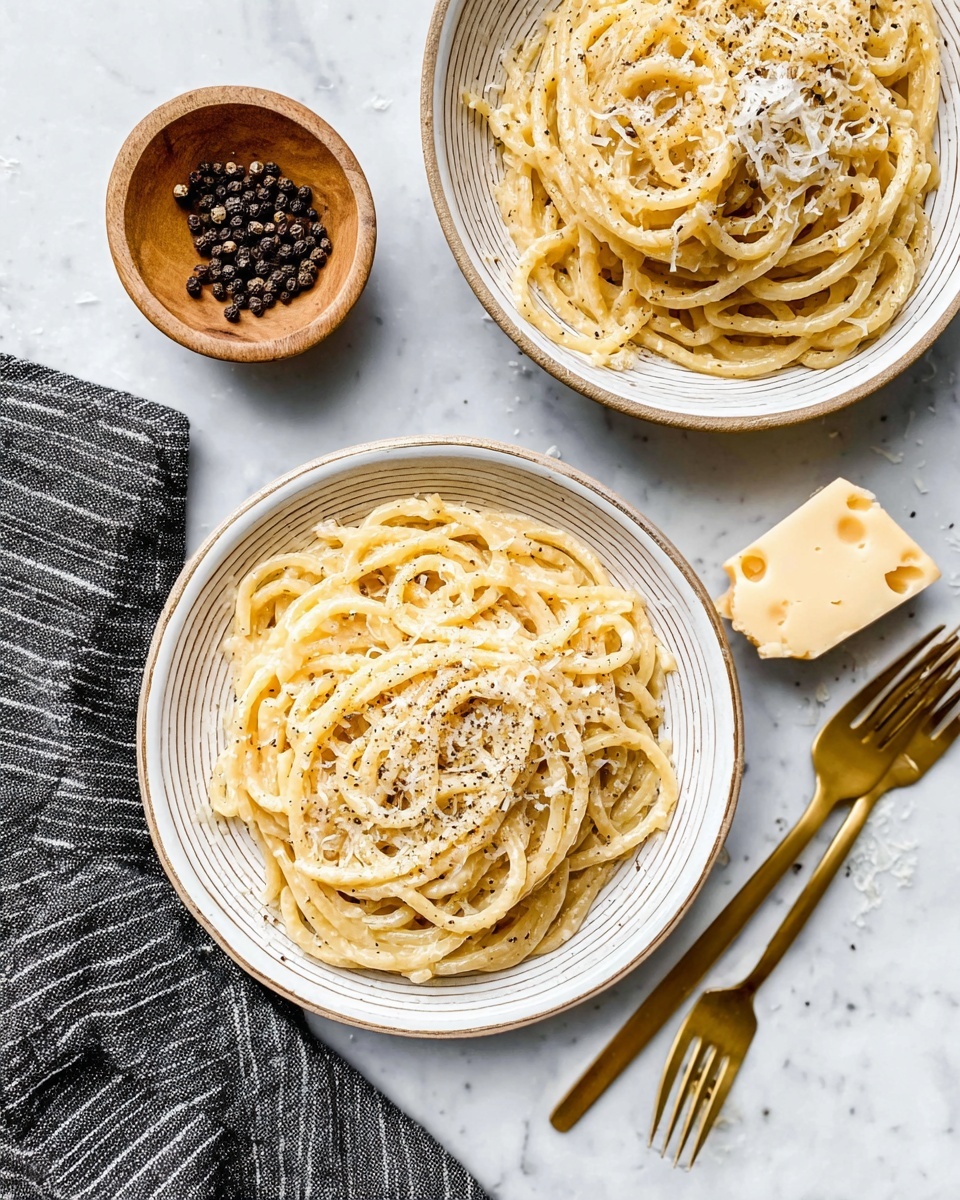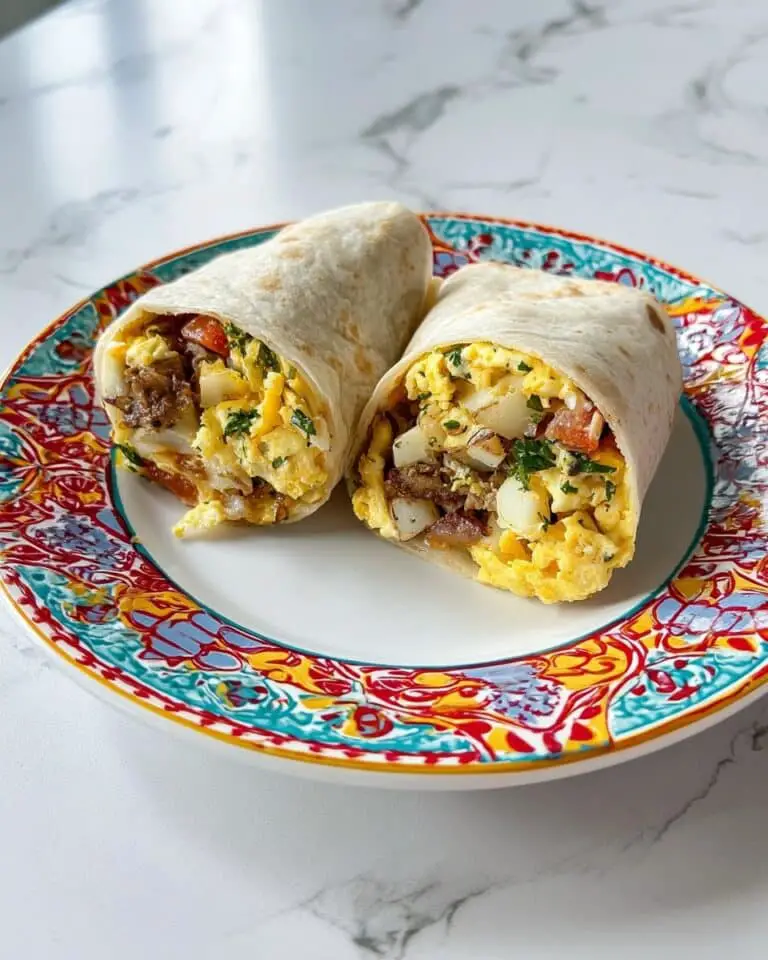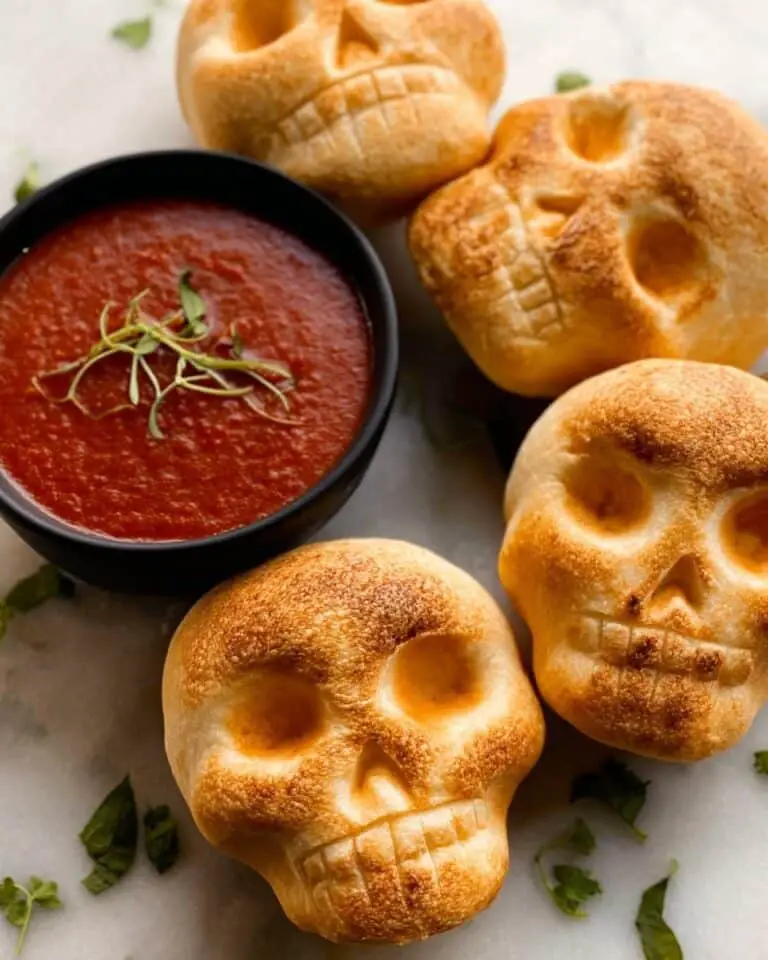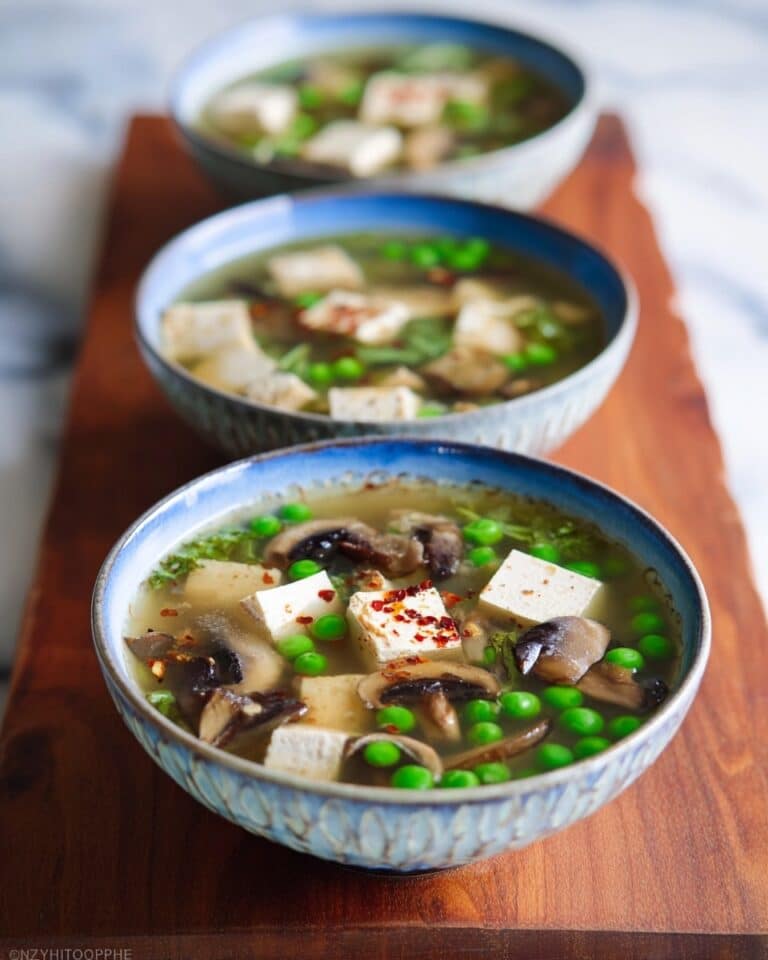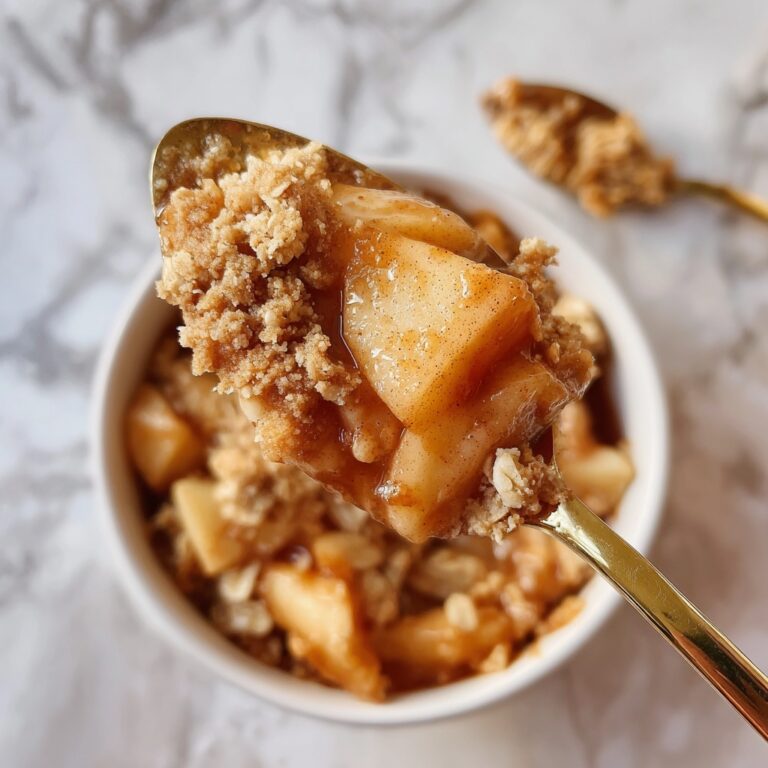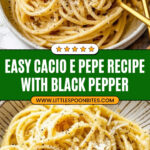I absolutely love how simple yet insanely delicious this Cacio e Pepe Pasta Recipe turns out. If you’ve ever wished you could whip up a restaurant-worthy pasta dish using just a handful of pantry staples, this is it. The magic lies in the creamy, peppery sauce that clings lovingly to each strand of spaghetti, creating a comforting classic that’s perfect for any night of the week. Stick with me here, and I’ll walk you through the little tricks I’ve learned to get it just right every time.
Why You’ll Love This Recipe
- Incredibly Simple Ingredients: Just pasta, Pecorino Romano, black pepper, and a few basics create a flavor-packed dish.
- Quick and Easy to Make: You’ll have dinner ready in about 20 minutes, perfect for busy weeknights.
- Restaurant-Style Results at Home: This recipe taught me how to get that silky, creamy sauce without heavy cream.
- A Classic Roman Comfort Food: It’s a true taste of Italy that feels fancy but is incredibly cozy.
Ingredients You’ll Need
The ingredient list for this Cacio e Pepe Pasta Recipe is wonderfully short and straightforward. You’ll want high-quality Pecorino Romano and freshly cracked black pepper to really make the flavors pop. Trust me, using finely grated cheese and fresh pepper makes all the difference.
- Extra-virgin olive oil: Adds a subtle fruitiness and helps bring everything together smoothly.
- Coarsely ground black pepper: Use freshly cracked pepper for the best aroma and kick; it’s the star of this dish.
- Spaghetti: Traditional choice for cacio e pepe—opt for good-quality dried pasta for the best texture.
- Kosher salt: Essential for seasoning your pasta water properly, which seasons your pasta from the inside out.
- Unsalted butter: Balances out the pepper’s heat and makes the sauce silky and rich.
- Pecorino Romano cheese: Very finely grated; this salty, sharp cheese is indispensable for authentic flavor.
Variations
I love that Cacio e Pepe Pasta Recipe is a perfect base for you to get creative. Over time, I’ve tweaked it to suit different moods without losing the soul of the dish. Feel free to make it your own!
- Adding Garlic: Sometimes I gently sauté a clove or two in olive oil for a subtle garlicky aroma that complements the pepper.
- Using Different Pasta Shapes: While spaghetti is classic, I’ve tried it with bucatini or linguine and loved how the sauce clings differently.
- For a Creamier Texture: A splash of pasta water and butter helps; if you’re feeling decadent, a spoonful of cream or mascarpone goes a long way.
- Vegetarian with a Twist: Adding sautéed mushrooms or peas can make it a heartier meal without losing its simple elegance.
How to Make Cacio e Pepe Pasta Recipe
Step 1: Toast the Pepper and Heat Your Oil
Start by heating 3 tablespoons of extra-virgin olive oil in a medium skillet over medium-low heat. Add about a teaspoon of coarsely ground black pepper and gently toast it for about one minute until it’s fragrant and just starting to sizzle. This step is a game-changer—it blooms the pepper’s flavor without burning it, so be patient and keep the heat moderate.
Step 2: Cook the Spaghetti ‘Al Dente’
Place your spaghetti in a large skillet (not a pot!) and cover it with fresh water. Add a small pinch of kosher salt, then bring it to a boil over high heat. Give the pasta a gentle nudge with a fork or wooden spoon every now and then to keep it from sticking. Cook it until it’s just shy of al dente—usually about a minute less than the package suggests. This ensures it’ll finish cooking perfectly once mixed with the sauce.
Step 3: Build the Sauce with Pasta Water and Butter
Before draining the pasta, scoop out 2 to 3 tablespoons of the starchy cooking water and add it to the skillet with the toasted pepper and oil. Stir in 2 tablespoons of unsalted butter, letting it melt slowly into the mixture. This salted, peppery fat is where richness starts to build up.
Step 4: Toss Pasta with the Sauce and Cheese
Using tongs, transfer the spaghetti directly into the skillet with the oil, butter, and pepper. Next, add the finely grated Pecorino Romano cheese along with the remaining 1 tablespoon of olive oil. Stir everything vigorously with a fork. The key here is to keep mixing so the cheese melts evenly without clumping; it turns into a luscious, creamy sauce that coats every strand of pasta.
Step 5: Adjust Consistency and Season to Taste
If the sauce feels too thick, add a splash more of that reserved pasta water while reheating gently to loosen it. Taste and season with extra salt and freshly cracked black pepper if needed. Serve immediately—this is best enjoyed fresh and hot.
Pro Tips for Making Cacio e Pepe Pasta Recipe
- Use a Large Skillet for Cooking Pasta: Cooking the spaghetti right in the skillet helps you control the liquid and sauce more easily.
- Grate Cheese Very Finely: I learned that finely grated Pecorino melts more smoothly and avoids clumping into gooey lumps.
- Reserve Pasta Water Carefully: Adding just the right amount of starchy water is crucial—it’s what creates that silky sauce texture.
- Don’t Overcook Your Pasta: Undercooking by 1-2 minutes means it finishes perfectly in the sauce without going mushy.
How to Serve Cacio e Pepe Pasta Recipe
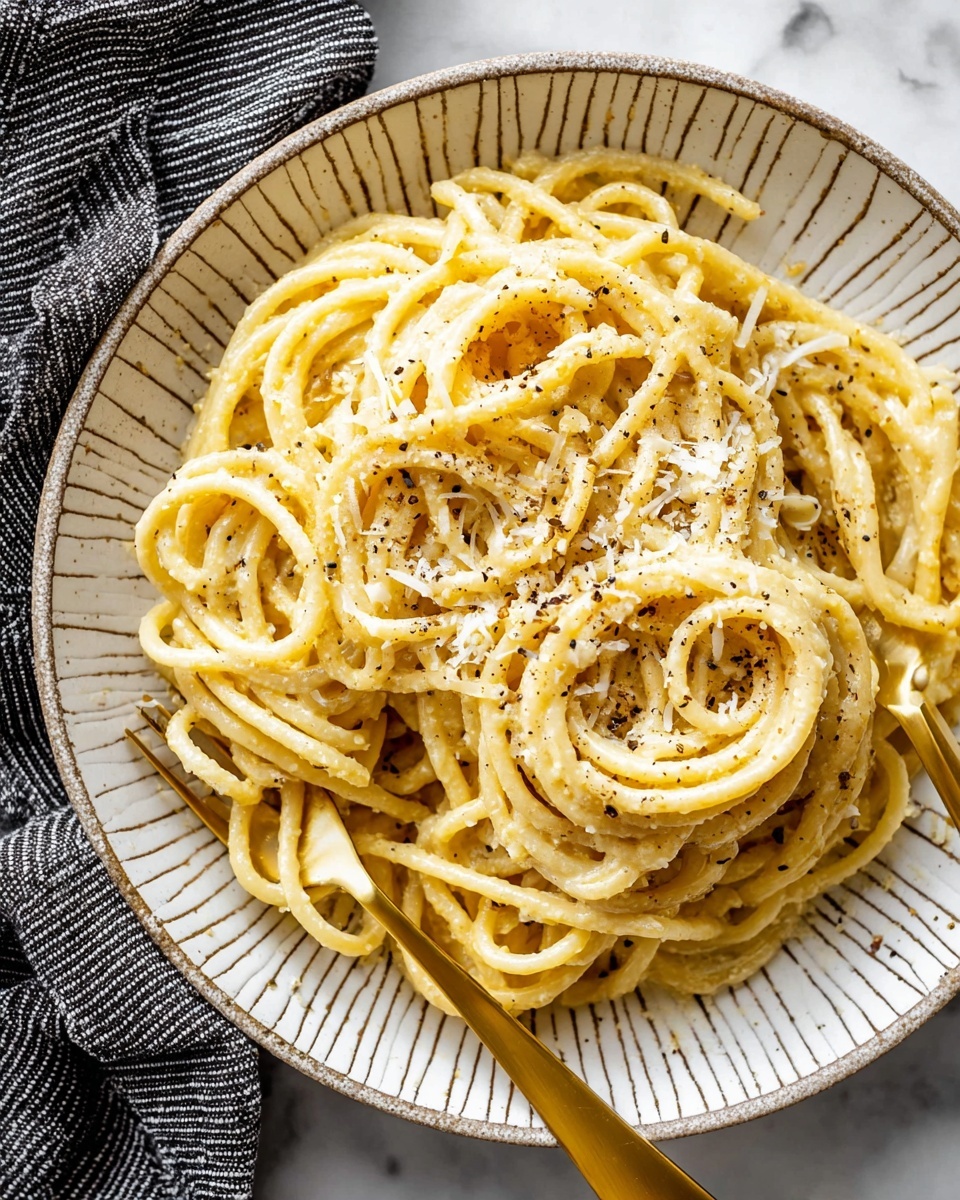
Garnishes
I usually keep it simple with extra grated Pecorino Romano and a generous sprinkle of freshly ground black pepper on top. Sometimes I add a few fresh parsley leaves for a pop of color and a hint of freshness, but honestly, this pasta stands strong on its own.
Side Dishes
My go-to side dishes include a crisp green salad with lemon vinaigrette or roasted vegetables like asparagus or broccoli. The brightness balances the richness of the pasta beautifully.
Creative Ways to Present
For dinner parties, I like to serve this pasta twirled neatly into high nests on each plate, topped with a little cracked pepper and shaved Pecorino. It gives such a lovely, elegant vibe without any fussy plating techniques.
Make Ahead and Storage
Storing Leftovers
Leftovers are best stored in an airtight container in the fridge for up to 2 days. I found that tossing the pasta with a little olive oil before storing helps prevent it from sticking together.
Freezing
Freezing this pasta isn’t ideal since the sauce tends to separate upon thawing and reheating. I’d recommend enjoying it fresh whenever possible for the best texture and flavor.
Reheating
To reheat, sprinkle a little water or broth over the pasta and warm it gently in a skillet over low heat, stirring often until warmed through and creamy again. Avoid microwaving if you can—this really keeps the texture close to freshly made.
FAQs
-
Can I use other types of cheese besides Pecorino Romano in this recipe?
While Pecorino Romano is traditional for its sharp, salty profile, you can substitute with Parmesan or a mix of Parmesan and Pecorino if needed. Just keep in mind the flavor and saltiness will vary slightly, but it will still taste delicious.
-
How do I prevent the cheese from clumping in the sauce?
The key is to grate your Pecorino Romano very finely and stir vigorously when adding it to the hot pasta mixture. Also, using some reserved pasta water helps create a smooth emulsion that keeps the sauce creamy instead of clumpy.
-
Can I make this recipe vegan or dairy-free?
To make a dairy-free or vegan version, skip the butter and Pecorino and try nutritional yeast for cheesy flavor, plus a plant-based butter or olive oil. The pepper and pasta water sauce still carries great flavor, but it won’t be the classic cacio e pepe experience.
-
What’s the best pasta shape for cacio e pepe?
Spaghetti is the traditional choice, but other long, thin pastas like bucatini or linguine work beautifully because they hold the sauce well. Avoid very thick or short shapes to maintain that classic texture.
Final Thoughts
This Cacio e Pepe Pasta Recipe is one of those dishes I keep coming back to for its simplicity and satisfying depth of flavor. It’s a perfect reminder that sometimes the best meals come from just a handful of ingredients treated with care. Next time you want a homemade Italian classic that’s quick and utterly delicious, give this recipe a try—you’ll feel like you’ve brought a little Roman sunshine right into your kitchen!
Print
Cacio e Pepe Pasta Recipe
- Prep Time: 5 minutes
- Cook Time: 15 minutes
- Total Time: 20 minutes
- Yield: 3 servings
- Category: Main Course
- Method: Stovetop
- Cuisine: Italian
Description
Cacio e Pepe is a classic Roman pasta dish highlighting the simple yet bold flavors of coarsely ground black pepper and sharp Pecorino Romano cheese tossed with perfectly al dente spaghetti in a creamy, luscious sauce made with olive oil and butter. This recipe is quick and easy, delivering an authentic taste of Italy with minimal ingredients and effort.
Ingredients
Pasta and Sauce
- 4 tablespoons (60ml) extra-virgin olive oil, divided
- Coarsely ground black pepper, to taste
- 1/2 pound (225g) spaghetti
- Kosher salt, to taste
- 2 tablespoons (30g) unsalted butter
- 2 ounces Pecorino Romano cheese (about 1 cup; 55g), very finely grated on a Microplane or the smallest holes of a box grater, plus more for serving
Instructions
- Toast Pepper and Heat Oil: Heat 3 tablespoons of olive oil and about a teaspoon of coarsely ground black pepper in a medium skillet over medium-low heat. Cook until the oil is fragrant and the pepper begins to sizzle lightly, about 1 minute. Remove from heat and set aside to infuse.
- Cook Spaghetti: In a large skillet, place the spaghetti and cover with water. Add a pinch of kosher salt. Bring to a boil over high heat, stirring occasionally with a fork or wooden spoon to prevent the pasta from sticking. Cook until al dente, typically about one minute less than package instructions recommend.
- Reserve Pasta Water and Combine: Transfer 2 to 3 tablespoons of the hot pasta cooking water into the skillet with the olive oil and toasted pepper mixture. Stir in the unsalted butter until melted.
- Toss Pasta in Sauce: Using tongs, lift the spaghetti out of the water and add it to the skillet with the oil, butter, and pepper mixture.
- Add Cheese and Adjust Sauce: Add the grated Pecorino Romano cheese and the remaining 1 tablespoon olive oil to the skillet. Stir vigorously with a fork until the cheese melts completely and combines with the fats to form a creamy sauce coating the pasta strands.
- Adjust Consistency: Add additional pasta water a few tablespoons at a time as needed, reheating the skillet gently until the sauce is silky and coats the spaghetti evenly.
- Season and Serve: Taste and adjust seasoning with salt and more black pepper as desired. Serve immediately, passing extra Pecorino Romano and black pepper at the table.
Notes
- This traditional Roman recipe relies on the perfect balance of simple ingredients — pasta, black pepper, and Pecorino Romano — to create a flavorful, creamy sauce without cream.
- Using finely grated Pecorino and properly reserved pasta water is key to achieving the silky texture of the sauce.
- Be sure not to overcook the spaghetti; al dente texture ensures the sauce clings well.
- To intensify the pepper flavor, freshly crack black peppercorns yourself rather than using pre-ground.
Nutrition
- Serving Size: 1 serving (approximately 1/3 of recipe)
- Calories: 581 kcal
- Sugar: 2 g
- Sodium: 382 mg
- Fat: 32 g
- Saturated Fat: 11 g
- Unsaturated Fat: 21 g
- Trans Fat: 0 g
- Carbohydrates: 57 g
- Fiber: 3 g
- Protein: 16 g
- Cholesterol: 40 mg

